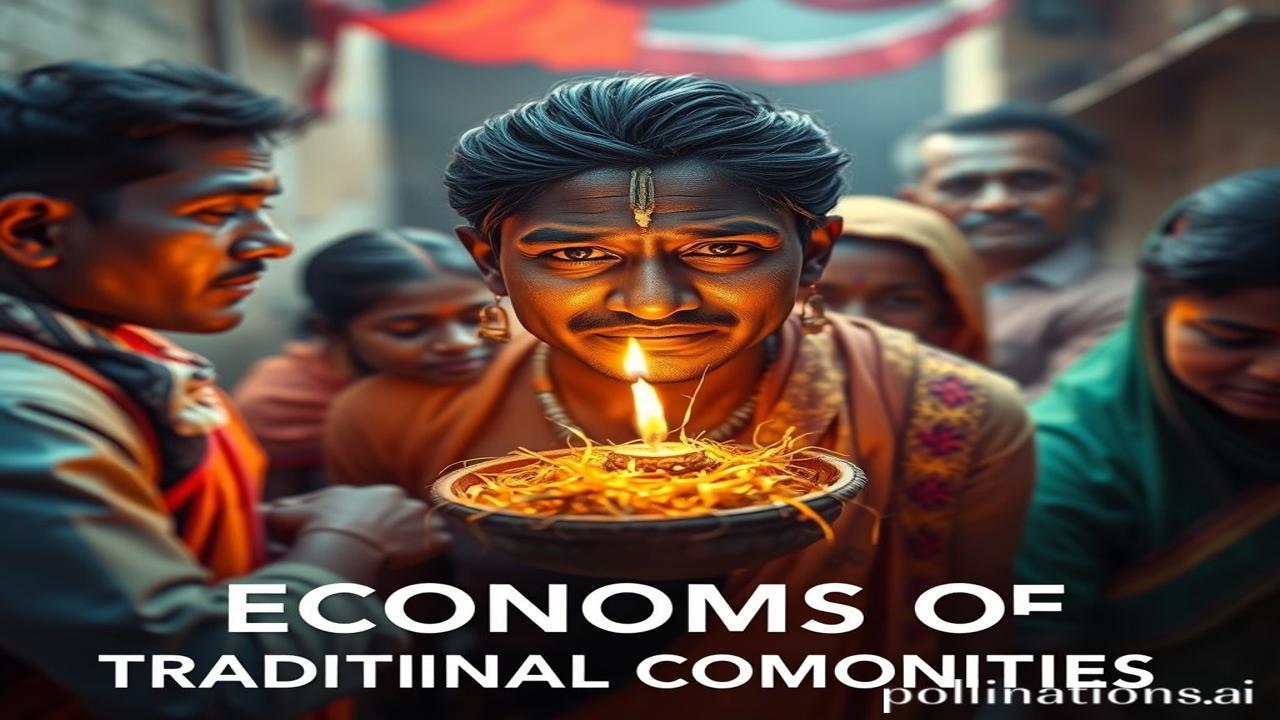Khazana Puraane Bazaar Ka: Economics of Traditional Craft Communities
Kabhi socha hai, kisi chhote se gaon mein, jahan waqt tham sa gaya hai, wahan ki hawa mein kis cheez ki mehak hoti hogi? The aroma of sun-dried clay, the sweetness of natural dyes, the quiet resilience of hands that have shaped generations of art – this is the fragrance of India’s traditional craft communities. Aaj hum inhi communities ki arthavyavastha, yaani economics, ki baatein karenge. Inke jeevan ko, inke sangharshon ko, aur inki kala ke mahatva ko samjhenge.
Shuruwat: Where Art Meets the Daily Grind
Traditional craft communities, they are not just about making beautiful things. They are a living embodiment of India’s rich cultural heritage. Ye log, sadiyon se, apni kala ke zariye apne parivar ko chalate aaye hain. We’re talking about weavers in Varanasi crafting exquisite silk saris, potters in Rajasthan shaping terracotta into works of art, or woodcarvers in Kashmir breathing life into walnut wood.
This isn’t just about economics; it’s about parampara (tradition), dharohar (heritage), and pechaan (identity). These crafts often originated centuries ago, sometimes even millennia, passed down through generations within families and communities. For example, the art of Kalamkari, a type of hand-painted or block-printed cotton textile, can be traced back to ancient times in Andhra Pradesh and Telangana. Similarly, the intricate embroidery of Chikankari in Lucknow flourished under the patronage of the Mughal rulers.
Why is all this important? Because these crafts are not just decorative items; they are stories woven into threads, shaped into clay, carved into wood. They are a tangible link to our past, a reminder of our shared humanity, and a source of livelihood for millions.
Zameeni Sach: Life in the Artisan’s Gali
Imagine walking through a narrow gali in a village in Kutch. The air is thick with the smell of wool and dyes. You hear the rhythmic clatter of looms, the gentle tapping of chisels, the animated chatter of women embroidering intricate patterns.
“Arrey Sita, yeh rang kaisa laga?” asks Lakshmi, holding up a piece of vibrant cloth.
“Bahut sundar, Lakshmi! Bilkul suraj ki tarah!” Sita replies, her eyes twinkling.
Their days are long and hard. They work from dawn till dusk, often in cramped and poorly lit conditions. They face challenges like fluctuating raw material prices, competition from cheaper machine-made products, and lack of access to markets. But despite these hardships, they persist. They persist because their craft is more than just a job; it’s their identity, their legacy, their shakti (power).
The rulers, in the past, often played a role in supporting these communities through patronage and commissioning of artwork. However, the advent of industrialization and globalization has brought new challenges, threatening the very survival of these traditional crafts.
Dharohar aur Pechaan: Indianness in Every Thread
Today, the echoes of these traditional crafts resonate throughout India. We see them in the vibrant colors of our festivals, in the intricate designs of our sarees, in the timeless beauty of our temples and monuments.
Think about the intricate carvings on the Khajuraho temples – a testament to the skill and artistry of generations of sculptors. Or the vibrant hues of the Madhubani paintings, a folk art form from Bihar, which depicts scenes from mythology and everyday life. Even in modern fashion, we see the influence of these crafts, with designers incorporating traditional techniques and motifs into contemporary designs.
This is Bharatiyata (Indianness) – a rich tapestry woven from diverse traditions and cultures, a legacy that we must strive to preserve. The survival of these craft communities is crucial for maintaining this identity.
Mazedar Tathya aur Bhram-Bhanjak: Truths & Myths
Log samajhte hain ki traditional crafts mehenga hota hai kyunki usmein zyada mehnat nahi lagti. Lekin asli sach yeh hai ki har ek piece ek kahani hai, ek hunar ka nishaan hai jo kai peedhiyon se chala aa raha hai. It is the culmination of years of learning, practice, and dedication.
Another misconception is that these crafts are only for the elite. While some products are indeed high-end, many craft communities produce affordable items that can be used and enjoyed by everyone.
Visuals & Feelings: A Sensory Journey
Imagine yourself in a workshop filled with the scent of sandalwood and beeswax. The air hums with the rhythmic whir of a spinning wheel. Your fingers trace the intricate patterns on a hand-woven carpet, feeling the texture of the wool and the skill of the weaver. The sounds of laughter and friendly banter fill the air, creating a sense of community and belonging. This is the magic of India’s traditional craft communities.
Antim Vichar: A Legacy to Uphold
“Kala ke bina jeevan aisa hai jaise bina pankhon ke parinda.”
Just as a bird needs wings to fly, society needs art to soar. By supporting these craft communities, we are not just preserving our cultural heritage; we are empowering individuals, fostering creativity, and building a more sustainable future. Let us cherish and protect this invaluable treasure for generations to come.
